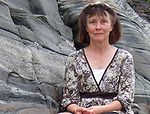Difference between revisions of "India2011- Digital Linguistics"
Lars Hellan (Talk | contribs) (→Digital Language Description, Knowledge Representation and Formal Linguistics for Indic Languages) |
|||
| Line 1: | Line 1: | ||
| − | + | In October 2011, NTNU will arrange a week-long event, called '''India 2011''', with India as the theme. The focus will be on broad cooperation | |
| − | in culture, research, higher education and business. [[File:India2011.gif|200px|left]] | + | in culture, research, higher education and business. [[File:India2011.gif|200px|left]] |
| − | + | The present arrangement between the University of Hyderabad and the Institute of Languages and | |
| − | + | Communication Studies and the Institute of Modern Languages at NTNU has Indian languages as its focus. | |
| − | + | The arrangement of several talks and workshops, announced here, is part of the NTNU's India week. | |
<blockquote><span style="color:green">'''India is a continent of many languages. Ethnologue <ref> Lewis, M. Paul (ed.), 2009. Ethnologue: Languages of the World, Sixteenth edition. Dallas, Tex.: SIL International. Online version: http://www.ethnologue.com/.</ref> refers to 452 listed languages of India. The nation is not only rich in languages. Grounded on work dating back to Pāṇini, Indian linguistics has had a significant influence on the development of linguistics as we know it today.'''</span></blockquote> | <blockquote><span style="color:green">'''India is a continent of many languages. Ethnologue <ref> Lewis, M. Paul (ed.), 2009. Ethnologue: Languages of the World, Sixteenth edition. Dallas, Tex.: SIL International. Online version: http://www.ethnologue.com/.</ref> refers to 452 listed languages of India. The nation is not only rich in languages. Grounded on work dating back to Pāṇini, Indian linguistics has had a significant influence on the development of linguistics as we know it today.'''</span></blockquote> | ||
==Digital Language Description, Knowledge Representation and Formal Linguistics for Indic Languages== | ==Digital Language Description, Knowledge Representation and Formal Linguistics for Indic Languages== | ||
| − | |||
In a workshop on Digital Language Description, Knowledge Representation and Formal Linguistics, linguists from Hyderabad and Trondheim will work together on the representation and formalisation of some of the salient aspects of selected languages from the Dravidian, the Indo-Aryan and the Austro-Asiatic language families of India. | In a workshop on Digital Language Description, Knowledge Representation and Formal Linguistics, linguists from Hyderabad and Trondheim will work together on the representation and formalisation of some of the salient aspects of selected languages from the Dravidian, the Indo-Aryan and the Austro-Asiatic language families of India. | ||
| − | + | [[File:LanguagesIndia.jpeg|right]] | |
The workshop will take place in a digital communication environment. A group of linguists will work on qualitative language description and linguistic formalisation of Indian languages. Keynote talks addressing central issues in the digitisation and formalisation of Indic languages will be combined with group sessions dedicated to the documentation and formalisation of central Indic construction types. Legacy-data will be digitised and enriched by further layers of annotation. Results of the workshop will be made accessible online using software developed at NTNU. | The workshop will take place in a digital communication environment. A group of linguists will work on qualitative language description and linguistic formalisation of Indian languages. Keynote talks addressing central issues in the digitisation and formalisation of Indic languages will be combined with group sessions dedicated to the documentation and formalisation of central Indic construction types. Legacy-data will be digitised and enriched by further layers of annotation. Results of the workshop will be made accessible online using software developed at NTNU. | ||
| + | The arrangement situates modern approaches to language description and documentation in the environment of the rise of linguistic sciences, namely the languages in the tradition of formal description of Sanskrit dating back nearly 3000 years. Vibrant communities in Hyderabad and Trondheim will develop and refine methods of digitised formal language research together, with staff and students from both universities informing each other on both formal, computational and empirical issues. Where the Sanskrit grammarian Panini made the first systematic symbolic approach to language description, the present arrangement focuses on symbolic approaches relative to current technologies and formal frameworks. | ||
| − | |||
| − | |||
| − | |||
| − | |||
| − | |||
| − | |||
| − | |||
| − | |||
| − | |||
==Keynote Talks== | ==Keynote Talks== | ||
Several Keynote talks will address central issues in the digitisation and formalisation of Indic languages | Several Keynote talks will address central issues in the digitisation and formalisation of Indic languages | ||
| − | + | ===On Indic Scripts and their role in Indic language processing=== | |
| Line 44: | Line 35: | ||
[[Image:LarsByM.jpg|thumb|150px|left|Lars Hellan|Professor Hellan is...]] | [[Image:LarsByM.jpg|thumb|150px|left|Lars Hellan|Professor Hellan is...]] | ||
| − | ==Workshop | + | ==Workshop == |
| + | The workshop will be introduced by a talk: | ||
| − | === | + | ===Collaborative corpus creation - qualitative and quantitative linguistic methods=== |
| + | [[Image:Dorothee2.jpg|thumb|150px|right|Dorothee Beermann is an assoc. professor at NTNU. Her fields of research are syntax and lexical semantics. She has specialised in the use of online data basing for Language Description and Language Documentation ]] | ||
| + | |||
| + | The workshop features two sections: | ||
| + | |||
| + | ===Multilingual text processing, interlinear annotation and formalisation of Indic languages=== | ||
Using natural language processing tools and linguistic web-technology developed at University at Hyderabad and at NTNU, we will create small research corpora which we will annotate for salient linguistic properties with the goal of deriving Attribute Value Matrix Notations from these annotations. | Using natural language processing tools and linguistic web-technology developed at University at Hyderabad and at NTNU, we will create small research corpora which we will annotate for salient linguistic properties with the goal of deriving Attribute Value Matrix Notations from these annotations. | ||
| − | === | + | ===Grammatical construction types across Indian languages=== |
Using methods of formal linguistic representation such as 'attribute value matrices' (AVMs), a systematic comparison of representatives of each of the major language families spoken in India will be conducted, focusing on a limited set of sentential construction types. The languages and their families are TBA. | Using methods of formal linguistic representation such as 'attribute value matrices' (AVMs), a systematic comparison of representatives of each of the major language families spoken in India will be conducted, focusing on a limited set of sentential construction types. The languages and their families are TBA. | ||
| − | |||
| − | |||
| − | + | ||
| + | |||
| + | |||
| + | |||
==References== | ==References== | ||
<references/> | <references/> | ||
Revision as of 21:34, 5 May 2011
In October 2011, NTNU will arrange a week-long event, called India 2011, with India as the theme. The focus will be on broad cooperation
in culture, research, higher education and business.The present arrangement between the University of Hyderabad and the Institute of Languages and
Communication Studies and the Institute of Modern Languages at NTNU has Indian languages as its focus.
The arrangement of several talks and workshops, announced here, is part of the NTNU's India week.
India is a continent of many languages. Ethnologue [1] refers to 452 listed languages of India. The nation is not only rich in languages. Grounded on work dating back to Pāṇini, Indian linguistics has had a significant influence on the development of linguistics as we know it today.
Contents
Digital Language Description, Knowledge Representation and Formal Linguistics for Indic Languages
In a workshop on Digital Language Description, Knowledge Representation and Formal Linguistics, linguists from Hyderabad and Trondheim will work together on the representation and formalisation of some of the salient aspects of selected languages from the Dravidian, the Indo-Aryan and the Austro-Asiatic language families of India.
The workshop will take place in a digital communication environment. A group of linguists will work on qualitative language description and linguistic formalisation of Indian languages. Keynote talks addressing central issues in the digitisation and formalisation of Indic languages will be combined with group sessions dedicated to the documentation and formalisation of central Indic construction types. Legacy-data will be digitised and enriched by further layers of annotation. Results of the workshop will be made accessible online using software developed at NTNU.
The arrangement situates modern approaches to language description and documentation in the environment of the rise of linguistic sciences, namely the languages in the tradition of formal description of Sanskrit dating back nearly 3000 years. Vibrant communities in Hyderabad and Trondheim will develop and refine methods of digitised formal language research together, with staff and students from both universities informing each other on both formal, computational and empirical issues. Where the Sanskrit grammarian Panini made the first systematic symbolic approach to language description, the present arrangement focuses on symbolic approaches relative to current technologies and formal frameworks.
Keynote Talks
Several Keynote talks will address central issues in the digitisation and formalisation of Indic languages
On Indic Scripts and their role in Indic language processing
Workshop
The workshop will be introduced by a talk:
Collaborative corpus creation - qualitative and quantitative linguistic methods
The workshop features two sections:
Multilingual text processing, interlinear annotation and formalisation of Indic languages
Using natural language processing tools and linguistic web-technology developed at University at Hyderabad and at NTNU, we will create small research corpora which we will annotate for salient linguistic properties with the goal of deriving Attribute Value Matrix Notations from these annotations.
Grammatical construction types across Indian languages
Using methods of formal linguistic representation such as 'attribute value matrices' (AVMs), a systematic comparison of representatives of each of the major language families spoken in India will be conducted, focusing on a limited set of sentential construction types. The languages and their families are TBA.
References
- ↑ Lewis, M. Paul (ed.), 2009. Ethnologue: Languages of the World, Sixteenth edition. Dallas, Tex.: SIL International. Online version: http://www.ethnologue.com/.


